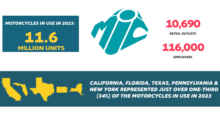A new theory of everything — Part four
 Getting the “Yootz” of America excited about riding
Getting the “Yootz” of America excited about riding
If you are raising a family in a city or suburb you know how hard it is to have opportunities for your kids to ride. For a subscription fee EZTrail would bring the trails and riding parks nearer to you. Some digitally-specified areas could be youth-oriented and allow only kids to ride (with parents) and describing progressive skill requirements such as grade variations that would be defined by the app as “levels” for kids to achieve. “Yootz” could be a companion app to EZTrail. For kids to do things today there must usually be a digital element and Yootz would do just that. Yootz would keep score and give awards for everything from miles ridden, to obstacles overcome, and even maintenance work done by the child. A good example of creating die-hard enthusiasts is the “Musically” app, and Yootz would attempt to create similar passion. Yootz would allow kids to share short videos about their favorite places to ride, work they do on their quad or dirt bike, etc. Themed rides could be developed with certain characters, graphics for the vehicles, etc. Business sponsors could host Yootz contests and there would be Yootz get-togethers. Businesses could select specific or random trail locations and give away prizes to Yootz riders. Yootz could also be used in ways similar to Pokemon Go to get kids to ride more.
Imagine announcing that some lucky kid who rides on a given weekend is going to be awarded an iTunes gift certificate or new tablet. Instead of lining up at a store to get their next game, we can encourage them to line up on trails! Yootz could work with schools or even partner with school apps like Schoology to offer kids free trail passes for good grades, or make kids answer math or science questions to “open up” a new trail. There could be events like an annual “Books and Bikes” weekend where reading and dirt bike riding are celebrated. By emphasizing safety and responsibility Yootz could help reduce the anxiety of non-riding mothers who otherwise wouldn’t take their kids out to ride. That’s a whole new customer demographic! And remember, schools are benefitting with every mile driven.
21st-century trail clubs
Trail clubs should embrace the prospect of increased trail access and rider participation. Trail clubs would receive supplementary funds via EZTrail for everything from covering expenses to buying equipment for trail maintenance. EZTrail subscribers would be educated about the vital work clubs do and be encouraged to participate themselves. Club members would be empowered to go to land owners to introduce the new program’s financial benefits, discuss the payment options, and discuss trail routes. Clubs would also get great publicity and legislative clout by positioning our sport as a promising element toward increased school funding.
Manufacturer growth
EZTrail would instantly become a premier platform for businesses to connect with riders. Increasing trail access would drive an increase in the overall customer base and open new business development opportunities. New OEMs who want to accelerate growth in a certain region could become a premier sponsor and dedicate funds for trail development in their target area. Suppliers can target the most active riders with their latest products and special offers. Riders spend money, and they are loyal to businesses that support their sport. Restaurants, bar and grills, gas stations and dealerships could all reach serious riders directly via advertising – in real time to entice them to stop by. Advertising would reach customers who are in the process of spending money not just customers that might spend some day. A wild card could be the adoption of drones to deliver some goods and services directly to the trails. There is a lot of FAA regulatory activity in this area and the jury is still out on how common drones will become for delivering goods and services. Having Amazon to push this issue will certainly help. How cool would kids find it to be sending it at Farmer Johnson’s gravel pit and have Pizza delivered by drone? Should such possibilities become reality – drone access to private property is what EZTrail might also sell as a service to generate revenue.
Smart trail markers
EZTrail access points need trail markers. These markers could be solar-powered, lithium-battery “smart” trail markers that could transmit or receive data wirelessly to each passing vehicle thereby validating each person entering the property. Land owners would have more peace-of-mind when they can see 100% authorized riders coming through their gates. Over time more smart trail markers could be added to communicate with each other in a chain. A chain of smart trail markers that has a node connecting to a mobile network could transmit critical data such as a request for assistance. A smart trail network could help riders anticipate an oncoming group of riders and show how many riders to expect. It would help riders understand where others in their group are whether a mobile network is available or not. Trail markers could have an LED beacon to alert riders to a safety alert, coupon code or sweepstakes giveaway from a product manufacturer. Vandalism and hacking would be a concern, but this is no different than in other areas of life.
Smart trail markers could also be incorporated into the Yootz youth-riding app. Yootz could use proximity to trail markers to provide elements similar to Pokemon Go (safely, of course) that turns rides into hunts for a trail marker with a purple LED, or simply a GPS coordinate, to win a $25 Gift Card.
The off-road version of global entry screening
A smart trail system and app-based trail access involves risk. There are always a few goofballs who ruin things for everyone else and riders and landowners alike should be concerned about this. A system that vets riders before they are allowed on the trail networks might be necessary, something akin to Global Entry or TSA pre-check for airline travelers. Whether non-certified riders are allowed at all is open to debate. The screening may include things as simple as 1. Proving that you have current registration on your off-road vehicle 2. Proving that you have passed a state rider’s test 3. Proving you have a current driver’s license and 4. (possibly) a background check. A 5th, more controversial element may include installing an RFID-type device that can interact with every smart trail marker that is passed to help identify users.
Financial considerations
There are multiple sources for revenue with EZTrail. They include member subscriptions, advertising revenue, Grant-In-Aid state funds, and Corporate sponsorships.
Since covering property taxes is a key aspect of EZTrail it is worth discussing in slightly more detail. Let’s assume the average property tax per 40 acres is $2,200 per year (unscientific). 40 acres offers a minimum ¼ mile of trail, necessitating no more than 400 of them for a 100 mile trail route. That means to hit targets the 100-mile trail route must cover $880,000 in property taxes – or $440,000 if it is assumed that each 40 has ½ mile of trails (one north/south, one east/west). 4,400 riders within the area of the trail willing to pony up $100 each would cover 50% to 100% of the relevant property taxes depending on trail density. Advertising, OEM Grants and State funds could cover the rest of the funding for this and more. If the thought of taking a one-time financial hit is too much for subscribers there is a way to ease the burden. A front-loaded toll system wherein every day that someone enters the trail network they pay less and less until reaching their obligation. An example of this pricing breakdown could look something like: $25, $20, $15, $15, $10, $10, $5, $5, Free. Another approach might be to charge higher tolls on weekends and less or no tolls on weekdays. There must be a maximum annual limit per family and per couple, however. Getting families into the sport is what it’s all about.
Once enough users are engaged EZTrail could start to become a more competitive bidding marketplace. Some landowners might want to be paid more than their property tax value, and some riders might be willing to pay more than a standard subscription fee to obtain certain privilieges. There are many possibilities for the revenue model depending on the granularity, far too many to list here.
A moon shot for our industry
This is not a finished idea, but it does illustrate some possibilities of using mobile technology to grow our sport. Local adoption of the model is probably feasible. However, creating something like 5,000 or 10,000 miles of EZTrails at a national level would require millions of dollars, thousands of man-hours, and years of patience. Small details regarding the revenue model, user interface, trail connection points, youth appeal, etc. could make or break the success of the app. But creating a private land trail system that generates profits for multiple stake holders while bringing in 1,000s of new riders could be just the thing to ensure a strong future for the off-road vehicle industry.
*Editor’s note: This Part four of Gary Gustafson’s blog on the new Theory of Everything. To read the third part, click here.
Powersports Industry Consultant and 25-year industry vet Gary Gustafson was the first designer of what became the RiderX and Ride Command systems for Polaris, as well as contributing to Yamahas new TRX trip planner system. His company G-Force Consulting Inc. provides Brainstorming Session guidance, New Business Development, OEM Account Sales and Market Research services to suppliers and OEMs alike. Visit www.gforceconsulting.com or marketresearch.motorcycles to learn more.








